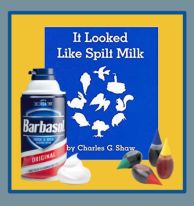
As a parent or child you probably had a love, hate relationship with messy play. I know I loved it as a child, but my parents were not big fans, at least not in the house! As a parent, I also loved it and saw the value and importance in it for a child’s development! This lesson not only explores the need for it, but also allows students to engage, first hand, with messy play and evaluate the benefits of it for themselves.
Set
- Ask students, “What comes to mind when you think of the term “messy play”? and have them share their responses.
- Provide students with this prompt to think about: Should children be allowed to participate in messy play? (Reflect on this as you read as you will answer it later.)
- Choose one or both of the suggested articles (assign one to A students and the other to B students) to read and reflect: “What the heck is messy play and why is it important?” and/or “The Importance of Messy Play.” On a post-it-note, jot down the 3 main takeaways you learned from the article.
- Now it’s time for the Sculpt & Scoot activity. I adapted this activity from an idea in the book, “The Playful Classroom” (affiliate link).
- Place students in small groups of 3 or 4. Give each student a small can of play-doh (each a different color) and a white board or paper along with a post it note.
- Ask each student to SCULPT one key take-away they learned about messy play from the article. Give them 3-5 minutes only to create. When the timer goes off, students must write one sentence about their take-away beside their creation. Students then SCOOT clockwise one position. Students read what their neighbor wrote and add to their neighbor’s sculpture with their own play-doh color, adding another sentence. Repeat the process on the third/fourth person’s creation.
- When students arrive back to their own creation, they are to observe and read additions to sculpture and sentences and then discuss as a group. Together, write a group summary on a large index card, answering the initial prompt (see above) with evidence from the article and/or learning experience. Each student should add their contribution to the summary using different color markers or pencils. Be sure to include an introductory sentence, one piece of evidence and explanation per person and a concluding sentence. Also include a color coded key if using different color markers or pencils. Note: This could also be done digitally on Padlet or Google Slides.
- Groups now share their responses to the prompt with the class where it can be further discussed, if necessary.
Materials
- iPads or Laptops
- Projectors & Screen
- Post-it-Notes
- Play-doh
- It Looked Like Spilt Milk (book–affilitate link)
- Shaving Cream & Food Coloring
- Wax Paper (optional)
Activities
- Now for the fun… it’s time for students to actually engage in some messy play! I ask students to pretend or imagine they are young children for this activity.
- Give each student a tray or piece of wax paper and squirt some shaving cream on it. Ask students to “play with it” and think about how they are using their senses to “play/explore” with the shaving cream.
- Read the story, “It Looked Like Spilt Milk” with the actual book. Ask students to make their own version of the shape designs described in the book, before showing them the book pictures. It’s fun to see how students interpret the images along the way. It’s up to you as to how many of the images you want them to create…it can be all of them or just a handful depending on the amount of time you have. Ask students to think about how adding a story to the play affects it.
- Now, add a drop of food coloring to each student’s shaving cream and after it’s mixed, have them continue to play and add a couple more shape designs for them to create from the book. Ask them to think about how adding color affected the play experience.
- After cleaning up the messy play, ask students if they enjoyed this type of play and to share why or why not. Additionally, ask them which PIES (physicial, intellectual, emotional, social areas of development) they felt were incorporated.
- Note: All of the above questions can be answered verbally as a class discussion immediately following the activity or you can ask students to put their thoughts in writing before discussing as they complete the “Play Experience Exit Slip” found below.
- After the messy play activity, I like to revisit the original prompt and see what connections students can make to the key learning take aways they gleaned from the article.


2 comments for “Messy Play”